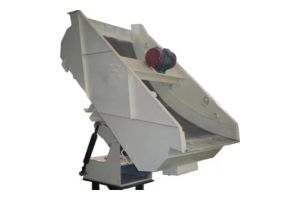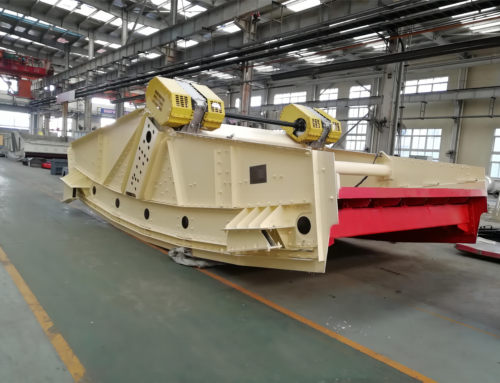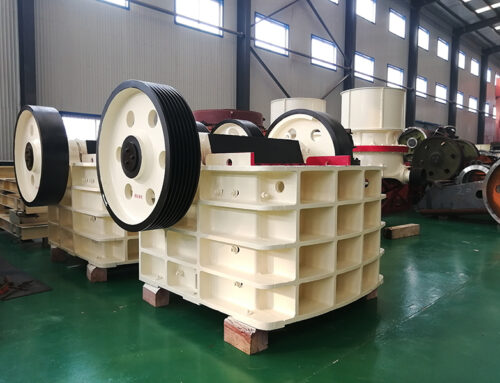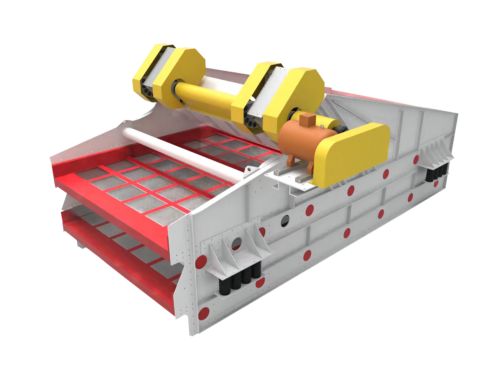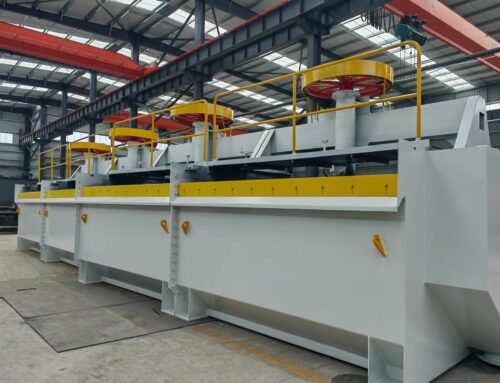In many aspects of industrial production, screening operations as a key process, product quality, production efficiency and resource utilisation play a decisive role. With the continuous progress of industrial technology, screening equipment is also in continuous innovation and development. Traditional linear and curved screens have been widely used in industrial practice for a long time, but some limitations have been gradually exposed. At the same time, the UHM series of curved screens, with its unique design and excellent performance, has come to the fore in the screening field, bringing more efficient and better screening solutions to many industries. Exploring the differences between UHM series curved screens and traditional linear and curved screens is of great significance for industrial enterprises to accurately choose the right screening equipment and improve production efficiency.
一.Differences in Screening Principles
1.Analysis of the principle of traditional linear screen
The traditional linear screen usually uses two horizontal vibration motors as the vibration source. These two motors synchronously rotate in the opposite direction, and the resulting excitation force prompts the screen box to do reciprocating linear motion. The material on the screen surface is affected by this force, presenting a jumping forward linear parabolic trajectory. In the process of this movement of the material, different particle size particles according to their own quality, shape and the size of the screen mesh aperture, and gradually realise the stratification and permeability screening. For example, in the production of sand and gravel aggregate, the linear screen separates sand and gravel particles of different sizes through this movement. However, the screening principle of linear screen determines that the residence time of the material on the screen surface is relatively short, and the screening accuracy will be restricted to a certain extent for some materials with small particle size difference and complex particle shape.
2.Traditional surface sieve principle interpretation
The traditional curved screen generally uses the gravity of the material itself and the centrifugal force generated when flowing on the surface to achieve screening. The screen surface is a certain curvature of the curved surface, when the material from the upper part of the screen into the screen surface, under the action of gravity along the curved surface decline, at the same time due to the existence of the surface, the material will produce centrifugal force. Under the joint action of gravity and centrifugal force, the fine particles can pass through the screen holes more easily, while the larger particles will stay on the screen surface and be discharged to the lower end. Like in the coal washing industry, some traditional curved screens are used to dewater, desliming and de-mediaising coal in this way. However, the traditional curved screen in the processing of some viscous or high moisture content of the material, the material is easy to adhere to the screen surface, resulting in screen hole blockage, which affects the screening efficiency and effect.
3.UHM series curved screen innovative principle
The UHM series of curved screens is a breakthrough in principle. It not only combines the gravity and centrifugal force of the material, but also optimises the trajectory of the material on the screen surface by means of a unique structural design: the screen box of the UHM series consists of three parts with a radius of curvature of 2030 mm, with a wrapping angle of 45°, 53° and 60°. The special design of radius of curvature and wrapping angle makes it possible to form a more reasonable trajectory of the material on the screen surface. When the material moves on the screen surface, the synergistic effect of centrifugal force and gravity is more efficient, which promotes the material to be more quickly
When the material moves on the screen surface, the centrifugal force and gravity work together more efficiently, resulting in faster material stratification and screening. In addition, the curved screen surface and screen frame of the UHM series are pivoted and can be rotated by 180°. This innovative design allows for even wear on different parts of the screen surface, which effectively improves operational efficiency and greatly extends the service life of the screen surface.
二.Differences in structural design
1.Traditional linear screen structure characteristics
The structure of traditional linear screen is relatively simple, mainly composed of screen box, vibration motor, vibration damping spring and other basic components. The screen box is usually welded with rolled steel plates and profiles, and some of the groups are connected by bolts, which ensures the overall stiffness is good and reliable. Vibrating motor as the source of vibration, installed on both sides of the screen box, through synchronous reverse rotation to produce linear direction of the exciting force. The damping spring is installed between the screen box and the frame, which plays the role of buffer and vibration damping, and reduces the impact on the foundation when the equipment is running. Simple structure may have some problems when facing complex working conditions and high-intensity operation, for example, the strength and stability of the screen box may be challenged when dealing with large output materials.
2.Traditional Curved Screen Structure Characteristics
The core structure of the traditional curved screen lies in its curved screen surface, which is generally made of stainless steel to ensure its corrosion and wear resistance. The curved surface and aperture are customised to suit different applications and material characteristics. In addition to the screen surface, traditional curved screens also include deflectors, inlet pipes, distribution boxes and other components. The deflectors prevent the effluent from splashing and allow the effluent to be filtered smoothly along the screen surface, while the inlet pipe and the distribution box are responsible for distributing the material evenly over the screen surface. In some fixed surface hydraulic screens used for sewage treatment, the structure design is relatively compact, but when dealing with materials of different nature, the flexibility is relatively poor, and once the screen surface is worn or damaged, the operation of replacing the screen surface is relatively complicated.
3.Unique structure of UHM series curved screen
The structure of the UHM series of curved screens has significant unique features. As mentioned earlier, the screen box consists of components with a specific radius of curvature and wrap-around angle, which provides the basis for efficient screening of the material. The pivoting construction of the screen deck and screen frame is a highlight. This allows the screen surface to be rotated by 180°, which makes it possible to utilise both sides of the screen surface during operation and to achieve more even wear. In addition, the UHM series of curved screens has been designed to be used in conjunction with other equipment. For example, it can be used in conjunction with hydrocyclones to achieve finer classification and dewatering of fine materials. In practice, this unique structural design makes UHM series curved screen can show good adaptability and stability when facing many kinds of complex materials and working conditions, and it has obvious advantages compared with traditional linear screen and curved screen.
三.Comparison of performance
1.Comparison of screening efficiencies
When it comes to screening efficiency, the UHM curved screens demonstrate outstanding performance. Thanks to the innovative screening principle and the unique structural design, the material is quickly stratified and permeated on the screen surface. In contrast, the screening efficiency of traditional linear screen is usually around 70%-80% due to the short retention time of materials on the screen surface when processing similar materials. Although the traditional curved screen uses gravity and centrifugal force, it is not as good as the UHM series curved screen in terms of material adaptability and optimisation of the movement trajectory, and the screening efficiency is usually around 80%.The high efficiency of the UHM series curved screen greatly improves the production efficiency, reduces the repeated processing of materials, and saves the time and cost for the enterprise.
2.Comparison of grading accuracy
Classification accuracy is one of the important indexes to measure the performance of screening equipment, and UHM series curved surface screen can achieve high precision classification by accurately controlling the trajectory and force of materials on the screen surface. For some materials with small differences in particle size, UHM series curved screen can accurately separate particles of different sizes, and the grading precision error can be controlled within a very small range. Although the traditional linear screen can improve the grading accuracy by adjusting the angle of the vibration motor, amplitude and other parameters, but when dealing with complex materials, the grading accuracy is relatively low and the error range is large. The traditional curved surface sieve also has certain limitations in grading accuracy, and for some particles close to the size of the sieve hole, it is easy to mis-screen. In the fine screening of chemical raw materials, the high precision classification performance of UHM series curved screen can ensure the stability of product quality and meet the strict requirements of the production process, which is difficult to achieve the traditional linear screen and curved screen.
3.Comparison of processing capacity
In terms of processing capacity, UHM series curved screen also performs well. Its reasonable structural design and efficient screening principle make the equipment able to process a large amount of materials in a unit time. For example, in a sand and gravel aggregate production line, the UHM series curved screen can handle hundreds or even thousands of tonnes per hour, depending on the model. The processing capacity of traditional linear screens is relatively limited, especially the heavy-duty linear vibrating screen, although it can handle large-size materials, but the single-hour processing capacity is generally not more than 200 tonnes. The traditional curved screen is not as good as UHM series curved screen in terms of processing capacity, which is limited by the flow speed and distribution uniformity of the material on the screen surface, etc. The strong processing capacity of UHM series curved screen enables it to meet the needs of large-scale production, which provides a strong support for the expansion of the production scale of the enterprise.
In summary, the UHM series curved screen differs significantly from traditional linear and curved screens in many ways. Its innovative screening principle and unique structural design give it higher screening efficiency, grading accuracy and processing capacity, while prolonging the screen life. In terms of application scenarios, UHM series curved screen can adapt to more complex materials and harsh working conditions, providing better and more efficient screening solutions for many industries.


